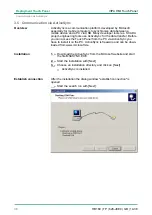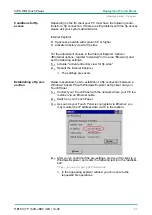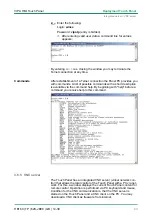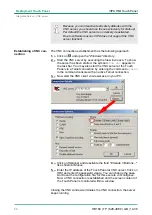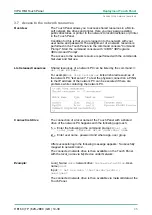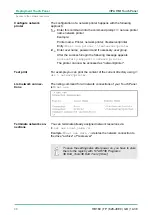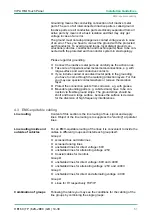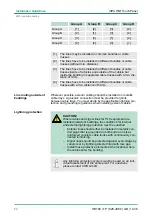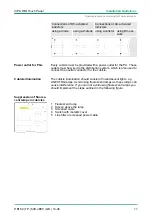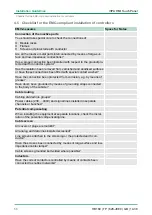
Grounding means the conducting connection of all inactive metal
parts. The sum of all interconnected inactive parts is called ground.
Inactive parts are all conductive parts electrically separated from all
active parts by means of a basic isolation and that may only get
voltage in case of an error.
The ground must not adopt dangerous contact voltage even in case
of an error. Thus you have to connect the ground with the protected
earth conductor. To avoid ground loops, local distant ground con-
structions (cubicles, construction and machine parts) have to be con-
nected with the protected earth conductor system in star-topology.
Please regard at grounding:
n
Connect the inactive metal parts as carefully as the active ones.
n
Take care of impedance-low metal-metal-connections, e.g. with
large-surface and well conductive contacts.
n
If you include coated or anodized metal parts in the grounding,
you have to come through the isolating protection layers. For this
you may use special contact washers or remove the isolation
layer.
n
Protect the connection points from corrosion, e.g. with grease.
n
Moveable grounding parts (e.g. cubicle doors) have to be con-
nected via flexible ground strips. The ground strips should be
short and have a large surface, because the surface is decisive
for the diversion of high frequency interferences.
4.3 EMC-equitable cabling
Content of this section is the line routing of bus, signal and supply
lines. Object of the line routing is to suppress the "slurring" at parallel
lines.
For an EMC-equitable routing of the lines it is convenient to divide the
cables in different groups and install each group itself:
Group A
n
screened bus and data lines
n
screened analog lines
n
unshielded lines for direct voltage
£
60V
n
unshielded lines for alternating voltage
£
25V
n
Coaxial cables for monitors
Group B
n
unshielded lines for direct voltage
>
60V and
£
400V
n
unshielded lines for alternating voltage
>
25V and
£
400V
Group C
n
unshielded lines for direct and alternating voltage
>
400V
Group D
n
Lines for H1 respectively TCP/IP
Following the table you may see the conditions for the cabling of the
line groups by combining the single groups:
Line routing
Line routing inside and
outside of cubicles
Combination of groups
VIPA HMI Touch Panel
Installation Guidelines
EMC-equitable cabling
HB160 | TP | 62K-JEE0 | GB | 14-38
51


